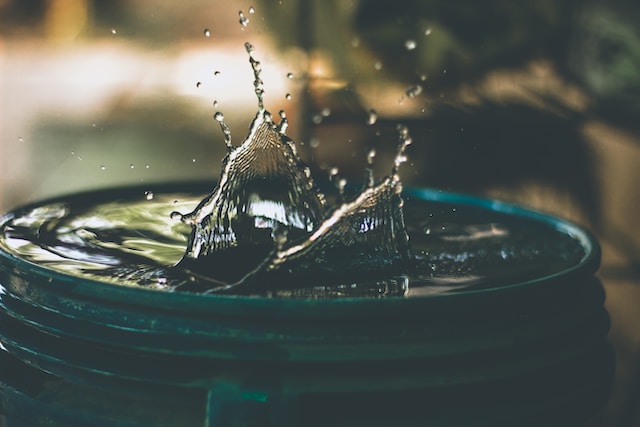Waste Water Supply

Understanding the Concept of Wastewater Supply
Understanding the concept of wastewater supply is crucial for homeowners and contractors alike. Homeowners need to be aware of their wastewater supply and the importance of treating it properly. Contractors play a key role in providing consultation and finding the right solution for wastewater treatment needs. With a wide range of products available, customers must make informed decisions. Expert advice and information on wastewater treatment systems, prices, and pump options such as the Barracuda GRP Grinder Pump – GRP19, can make all the difference. Having a knowledgeable and experienced team of manufacturers to support the customer’s needs is essential. Access to a wealth of resources such as articles, guides, and educational materials can further enhance one’s understanding of the importance of wastewater treatment and the available solutions.
Definition and Importance of Wastewater Supply
Definition and Importance of Wastewater Supply
Wastewater supply refers to the collection and distribution of waste water from various sources for different uses. This includes the water that is discharged from households, industries, and commercial establishments. The importance of wastewater supply lies in its potential to address the growing demand for water while also promoting water quality. Through the establishment of wastewater treatment plants, contaminants in the water can be removed, thus minimizing surface water pollution and reducing the threat to human health. Wastewater supply plays a crucial role in sustaining communities by providing a vital source of water for various purposes such as drinking, fishing, swimming, and irrigation. It also helps in the overall progress of towns and cities by ensuring a reliable and safe water supply for daily activities.
The Role of Wastewater Supply in Sustainable Development
Wastewater supply plays a crucial role in sustainable development by ensuring the responsible management of our water resources. Waste water from various sources is collected through collection systems such as sewers and drains, and it undergoes treatment processes to remove contaminants and pollutants. This treated wastewater, also known as effluent, is then discharged into surface waters or reused for various purposes. Governments and municipalities implement wastewater treatment plans and regulations to protect our environment and water sources from pollution. Wastewater treatment plants, equipped with components such as tanks, clarifiers, and centrifuges, are responsible for carrying out the treatment process, which involves physical, biological, and chemical methods to effectively remove harmful substances. By implementing proper wastewater management systems, communities can mitigate the negative impacts of wastewater on the environment and safeguard our water supply for future generations.
The Integral Role of Sewage and Wastewater Treatment Plants
Sewage and wastewater treatment plants play an integral role in managing and treating waste water supply. These facilities are responsible for ensuring that wastewater is treated and cleaned before it is discharged back into the environment. They operate within strict regulations and limits set by licenses and funds provided by the government. The infrastructure of these treatment plants is designed in order to efficiently and effectively remove pollutants and contaminants from the waste water supply. Through processes such as wells and rainwater infiltration, as well as legislation and acts, the treatment plants ensure that the rate of irrigation and water pollution is kept to a minimum. By employing techniques such as the drinking water treatment process, including ozone treatment and chlorination, these plants protect the health of Canadians and the environment. Additionally, these facilities also contribute to resource recovery by separating and treating solid wastes and extracting valuable materials such as methane gas, which can be used for energy purposes. Overall, sewage and wastewater treatment plants are essential in maintaining the quality of waterways and protecting drinking water sources.
Function and Scope of Sewage Treatment Plants
Sewage treatment plants play a crucial function in the management of wastewater. These facilities are designed to treat and process wastewater, ensuring the removal of pollutants before it is released into the environment. The scope of sewage treatment plants is extensive, as they handle a wide range of waste materials such as coffee grounds, household waste, and even industrial waste. They are regulated and monitored by state water quality agencies and the Environmental Protection Agency to maintain high water quality standards. The operation of these plants involves various methods, including the use of wetlands, ultraviolet light, and chemical treatments, to effectively remove contaminants and ensure the safe disposal of treated wastewater.
The primary goal of sewage treatment plants is to protect the environment and water supply. By removing harmful substances and pathogens from wastewater, these plants prevent water pollution and reduce the threat to water sources such as wells, lakes, and rivers. The treatment process targets the removal of solids, nutrients, and organic matter, which can cause water quality issues and harm aquatic ecosystems. Additionally, sewage treatment plants help address the growing concern of water scarcity by promoting water conservation measures. Through the treatment and reuse of wastewater, these facilities reduce water consumption and provide a valuable resource for irrigation, industrial processes, and even drinking water in some nations. Overall, sewage treatment plants play a vital role in safeguarding public health, preserving natural resources, and promoting sustainable water management practices.
Workings of Wastewater Treatment Plants
Wastewater treatment plants play a crucial role in addressing the issues related to wastewater supply and pollution problems. These plants are designed to treat and purify wastewater before it is discharged into water bodies such as oceans, rivers, and lakes. In fact, almost half of the sewage treatment plants in the United States are located within a short distance of an ocean, according to the EPA. The workings of wastewater treatment plants involve a combination of processes and technologies that aim to remove harmful constituents from wastewater, including chemicals, bacteria, and other pollutants. Various factors such as power failures, malfunctions, or the presence of non-biodegradable items like dental floss, diapers, and paper towels that may be flushed down the toilet or disposed of through garbage disposal can potentially damage the treatment process. Efforts and actions are continuously being made to improve the efficiency and effectiveness of wastewater treatment plants to ensure the protection and renewal of water resources.
Wastewater treatment processes also involve the use of vegetation and wetland systems to further enhance the removal of pollutants. For example, the use of shrubs and other types of vegetation can help in filtering and removing certain chemical and organic loads from the wastewater. Additionally, wetland systems can act as natural filters to remove impurities and improve water quality. However, despite these efforts, there are still challenges faced by wastewater treatment plants, such as combined sewer overflows (CSOs) and bypasses, which occur during heavy rainfall events and lead to the discharge of untreated wastewater directly into water bodies. To address these issues, ongoing research and collaboration among scientists, engineers, policy-makers, and environmental organizations like the Sierra Club and Ecojustice are crucial. It is through these combined efforts that we can ensure the health and sustainability of our water supplies and tackle the various environmental and health issues associated with wastewater.
An Insight into Sewage and Wastewater Treatment
Sewage and wastewater treatment play a crucial role in maintaining the integrity of wastewater supply systems. Wastewater, also known as waste water, refers to any water that has been used and is no longer suitable for its initial purpose. This includes water from sources such as showers, dishwashers, toilets, lawn irrigation, and swimming pools, among others. Wastewater contains a variety of impurities, including sediments, chemicals, and organic matter, which can be harmful to human health and the environment if not properly treated. The treatment process involves several stages, including pre-treatment, filtration, and disinfection, to remove impurities and ensure the water is safe for reuse or discharge into the environment. By treating wastewater, we not only protect public health and the environment, but also conserve water resources and support sustainable development.
Core Beliefs and Practices in Sewage Treatment
Sewage treatment is guided by a set of core beliefs and practices that ensure the proper management of wastewater supply. These principles are essential in addressing the combination of environmental, health, and safety concerns associated with sewage and wastewater treatment. By adhering to these practices, the risk of contamination and disruption to the water supply is minimized, protecting both public health and the environment. This is achieved through the implementation of effective treatment technologies in wastewater treatment plants, which remove contaminants and treat waste before its discharge into the environment or reuse in water supply systems. Additionally, regular evaluation of the water and wastewater systems, as well as proactive measures such as pretreatment and monitoring, are key approaches in maintaining the integrity and resilience of the entire water infrastructure.
To ensure the effectiveness of sewage treatment, it is crucial to involve multiple groups and stakeholders in the decision-making process. This includes government agencies, community organizations, water utilities, and research institutions, among others. Collaboration among these groups is essential in strategizing and implementing initiatives that improve access to safe and clean water. The U.S. Environmental Protection Agency (EPA), for instance, has established policy directives and programs to support community climate resilience and enhance the overall quality of the water sector. These efforts focus on enhancing cybersecurity, increasing resilience against natural disasters, and promoting sustainable water infrastructure funding. By combining the expertise of different stakeholders and addressing specific characteristics of the risk landscape, sewage treatment can effectively respond to emergency situations and prevent widespread contamination incidents. The inclusion of multiple perspectives and collaborative efforts are crucial in building resilient and sustainable wastewater systems.
Techniques Involved in Wastewater Treatment
Wastewater treatment techniques involve a multitude of processes and equipment to ensure the effective removal of contaminants from the waste water supply. These techniques are crucial in transforming the waste water into a clean and safe form before it is discharged back into the environment. The operation of wastewater treatment plants involves the use of various reagents and equipment to achieve decontamination and oxidation of the waste water. Additionally, the sequencing and deployment of processes such as series of oxidation tanks and storm water drainage systems are considered for their effectiveness and cost considerations. The goal is to minimize the concentration of contaminants in the waste water and ensure the protection of water quality in the surrounding area.
An important aspect of wastewater treatment is the consideration of contaminants from various sources. Pretreatment strategies are implemented to remove or reduce contaminants at the source, such as industries or residential areas, before they enter the waste water collection system. In the event of emergencies or accidents, such as train derailments or pipeline ruptures, spill containment and control measures are put in place to prevent contamination of water habitats. Detention basins, retention ponds, and wetlands are used to control the flow of rain runoff and provide natural treatment for the water. The use of advanced design and decision support tools help in assessing different scenarios and selecting the most appropriate treatment techniques. By implementing these techniques, wastewater treatment plants can efficiently remove contaminants and ensure the protection of water quality for communities and the environment.
Expanding the Value of Wastewater Through Resource Recovery
Resource recovery in wastewater management plays a crucial role in expanding the value of wastewater. By implementing innovative techniques and processes, wastewater can be transformed into a valuable resource. For example, wastewater can be treated and reused for various purposes such as irrigation of playing fields, replenishing fish ponds, and recharging groundwater. Additionally, the recovered wastewater can be used for non-potable purposes such as flushing fire hydrants and maintaining fish habitats. Resource recovery not only reduces the strain on freshwater resources but also helps in reducing pollution and pollutant loadings in water bodies. By adopting resource recovery practices, wastewater treatment plants can contribute to sustainable development and the efficient management of water resources.
Delving into the World of Wastewater Resource Recovery
Wastewater resource recovery is a rapidly growing field that focuses on harnessing the potential of wastewater for various valuable purposes. With the global demand for clean water increasing and the need for sustainable practices becoming ever more crucial, the concept of wastewater resource recovery is gaining momentum. The potential benefits are vast, ranging from reducing water pollution to promoting resource efficiency and maximizing the value of wastewater supply. By implementing innovative treatment technologies and processes, such as oxidation processes and vermifilter systems, wastewater can be treated and transformed into a valuable resource that can be used for purposes like irrigation water, vegetable washing water, and even as a source of energy for power plants.
The advancements in wastewater treatment systems and technologies have opened up new possibilities for the effective removal of pollutants from wastewater. Traditional treatment processes, such as floc and filtration, have paved the way for more sophisticated techniques like reverse osmosis membrane filtration and carbon filters. These systems have proven to be highly effective in removing a wide range of pollutants, including micropollutants, chemicals, and contaminants from various sources such as the food industry, pulp and paper industry, and even oil contamination. This has led to an improvement in effluent quality and a reduction in point source pollution, ensuring a cleaner and safer environment for both human and aquatic life. The continued research and development in this field, coupled with the increasing availability of alternative treatment options, are vital in addressing the challenges faced by wastewater treatment systems and achieving sustainability in the management of wastewater resource recovery.
Key Techniques in Wastewater Resource Recovery
One of the key techniques in wastewater resource recovery is the use of sedimentation tanks. These tanks play a crucial role in the treatment stage of wastewater supply. They allow for the separation of impurities such as sediment runoff, oil, and grease from the liquid waste. By utilizing gravity, the heavier materials settle at the bottom of the tanks while the clarified water is removed from the top. This phase separation transfers impurities to the sludge, which can then be further processed or disposed of appropriately. Sedimentation tanks are commonly used in various industries including petrochemical and chemical manufacturing, animal operations, and landfills.
Another important technique in wastewater resource recovery is the use of wetlands. Wetlands act as natural filters and offer an effective way to remove pollutants from wastewater. They are designed to enhance the natural treatment process by allowing the water to flow through a bed of vegetation and substrate material. Wetlands are particularly effective in the removal of nutrients, metals, and organic pollutants. In agricultural settings, for example, they can be used to treat silage liquor from dairy farms, settling out solids and reducing pollutant concentrations before the water is discharged. Wetlands are also valuable for wastewater reuse, as they can help improve water quality before it is reintroduced into the environment.
Pollutants Commonly Identified in Wastewater
Pollutants commonly identified in wastewater include a wide range of substances that are detrimental to water quality and the environment. These pollutants can originate from various sources such as industrial and domestic wastewater, stormwater runoff, and agricultural activities. Common pollutants found in wastewater include suspended solids, such as sediment, soil particles, and organic matter. Other pollutants include nutrients, such as nitrogen and phosphorus, which can lead to excessive algae growth and oxygen depletion in aquatic ecosystems. Additionally, wastewater can contain harmful chemicals like heavy metals, pesticides, and pharmaceuticals, which can have adverse effects on human health and the environment. To ensure the protection of water resources, effective wastewater treatment processes are required to remove or reduce these pollutants before the water is discharged back into the environment or reused.
Main Types and Sources of Wastewater Pollutants
Wastewater contains various types of pollutants that can have detrimental effects on the environment and human health. These pollutants come from a variety of sources, including homes, industries, and businesses. Substances such as human waste, chemicals, and solid materials are common pollutants found in wastewater. When released into rivers or other bodies of water, these pollutants can negatively impact water quality and the species that rely on these waters for their habitats. Therefore, it is crucial to effectively treat wastewater to remove these pollutants before returning the water to the environment.
One of the main goals of wastewater treatment plants is to remove pollutants from wastewater to protect water quality. These treatment plants use various techniques, such as bacteria and chemical processes, to break down and remove pollutants. Bacteria play a vital role in the treatment process as they help break down organic matter and compounds present in wastewater. Additionally, the treatment plants also remove solids from the wastewater through processes like dewatering and fabric filters. This ensures that the treated wastewater meets the required standards for reuse or discharge back into the environment. By effectively treating wastewater, we can prevent pollution and protect the health of our water resources.

Conclusion
Understanding the concept of wastewater supply is crucial for sustainable development. Wastewater supply refers to the collection and treatment of wastewater before it is released back into the environment. This process is essential for maintaining the health and well-being of both human populations and wildlife habitats. Wastewater contains various pollutants, including pathogens, chemicals, and nutrients, that can pose significant threats to water bodies and the organisms living within them. Without proper care and treatment, wastewater can contaminate drinking water sources and negatively impact fisheries, which in turn affects the fishing industry and overall ecosystem health. Additionally, the discharge of untreated wastewater can lead to the decline of wildlife populations and the closure of beaches and recreation areas, posing health concerns for both humans and animals. Therefore, prioritizing wastewater supply and investing in efficient treatment plants is of utmost importance to protect the environment and ensure the sustainability of water resources.
FAQ
What is wastewater supply?
Wastewater supply refers to the provision of treated or untreated water that has been used in households, businesses, and industries and is discharged into wastewater systems for further treatment or disposal.
Why is wastewater supply important?
Wastewater supply is important because it helps to maintain public health and hygiene by removing harmful pollutants from water before it is released back into the environment. It also helps to conserve water resources by treating and reusing wastewater.
What is the role of wastewater supply in sustainable development?
Wastewater supply plays a crucial role in sustainable development by promoting the efficient use of water resources, reducing pollution, and supporting the circular economy through wastewater treatment and resource recovery.
What is the function of sewage treatment plants?
Sewage treatment plants are responsible for treating wastewater from households and industries to remove contaminants and pollutants. They play a vital role in protecting public health and the environment by producing clean water and reducing the impact of wastewater discharge.
How do wastewater treatment plants work?
Wastewater treatment plants use a series of physical, chemical, and biological processes to remove pollutants from wastewater. This includes removing solid particles, organic matter, and harmful bacteria, as well as disinfecting the water before it is discharged or reused.
What are some core beliefs and practices in sewage treatment?
Core beliefs and practices in sewage treatment include the use of advanced technologies and processes, regular monitoring and testing of water quality, adherence to strict environmental regulations, and the continuous improvement of treatment methods to ensure effective and efficient wastewater treatment.
What techniques are involved in wastewater treatment?
Wastewater treatment techniques include primary treatment, which involves the physical removal of solid particles, secondary treatment, which uses biological processes to break down organic matter, and tertiary treatment, which focuses on removing remaining contaminants and disinfecting the water.
How can the value of wastewater be expanded through resource recovery?
The value of wastewater can be expanded through resource recovery by extracting and reusing valuable resources such as nutrients, energy, and water itself. This reduces the need for freshwater sources and contributes to a more sustainable and circular approach to wastewater management.
What are some key techniques in wastewater resource recovery?
Key techniques in wastewater resource recovery include anaerobic digestion, which produces biogas for energy generation, nutrient recovery through processes like struvite precipitation, and water reuse technologies such as membrane filtration and disinfection.
What are some pollutants commonly identified in wastewater?
Common pollutants found in wastewater include organic matter, nutrients (such as nitrogen and phosphorus), pathogens (bacteria, viruses, and parasites), heavy metals, pharmaceuticals, and industrial chemicals.
What are the main types and sources of wastewater pollutants?
Wastewater pollutants can be categorized into point source pollutants (such as industrial discharges) and non-point source pollutants (such as agricultural runoff and stormwater). The main types of pollutants include organic compounds, nutrients, pathogens, and various chemical substances.
Is wastewater supply beneficial for the environment?
Yes, wastewater supply is beneficial for the environment as it helps to reduce water pollution, protect ecosystems, and conserve water resources. Proper treatment and management of wastewater can have positive impacts on the environment and contribute to sustainable development.
How does wastewater supply contribute to public health?
Wastewater supply contributes to public health by removing harmful contaminants and pathogens from wastewater, preventing the spread of waterborne diseases. It ensures that clean water is available for various purposes, including drinking, bathing, and irrigation.

